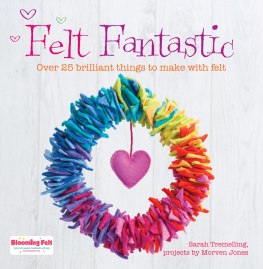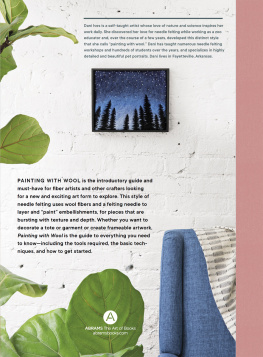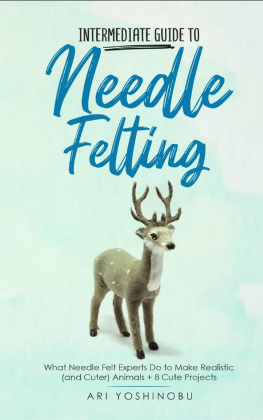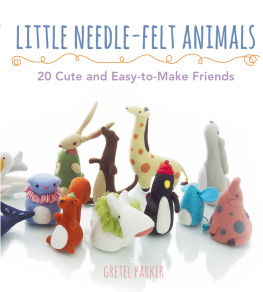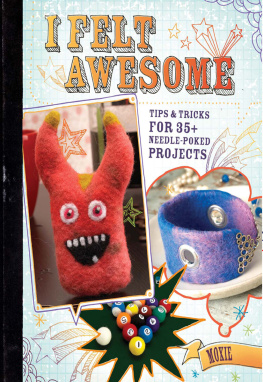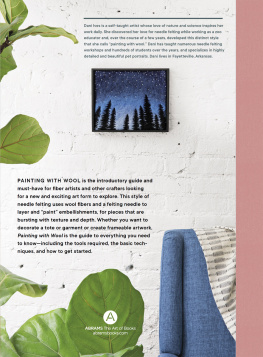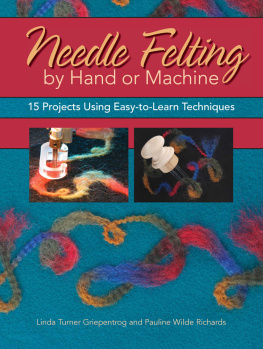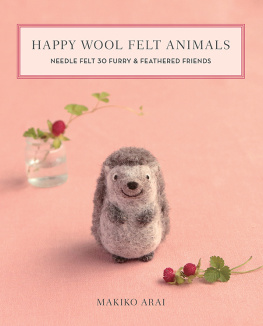Contents
All full-size templates can be found at: www.stitchcraftcreate.co.uk/patterns
Introduction
If you already know how wonderful felt is then you can skip straight to the projects and there are some wonderful ones to choose from! If, however, youve yet to discover the delights of working with felt, then you might want to read on.
Wool felt is made from 100% wool and is the oldest documented textile. It is made by soaking wool in warm water and agitating the fibres so that they felt together. You may have made your own felt in the past, probably accidentally when you put a cashmere jumper in the washing machine and it came out all teeny tiny. Whilst 100% wool felt is the most expensive type of felt you can buy, there are many other cheaper alternatives, including eco-felt (made from recycled bottles), acrylic felt, bamboo felt and wool felt mixes (typically a 70/30 mix of acrylic or rayon and wool).
The main reason I find felt so fantastic is that it doesnt fray. This means that you dont have to faff about with hems and stuff like that. Because it is so easy to work with its great for getting children interested in sewing and crafting.
This book is full of projects using felt in many forms. From felt sheets, to felt balls, felt string to moulded felt shapes, youll find all kinds of different projects here. The book is divided into sections, focusing on felt items for children, for the home, for accessories and for the festive season. Any templates needed are included with the projects and the instructions couldnt be simpler. If youre looking for something to make for Christmas or Halloween, we have projects for that. How about a brooch to jazz up a dull winter coat? If you need something for a childs room we have bunting and mobiles. You could brighten up the dinner table with our floral place settings the choice is endless.
Whatever you choose, we hope youll enjoy making and using our projects and taking inspiration from the many ideas in this book. At Blooming Felt we love what we do and hope you will too!
Materials & Techniques
Materials & Equipment
As this book was written in conjunction with our company, Blooming Felt (see ), the majority of the materials used were provided by them, but you dont have to use exactly the same materials. Most of the projects use 100% wool felt sheets. All the felt we use is handmade, which means that its a lot thicker than commercially produced felt and therefore doesnt need any stiffeners or backing materials. If you plan to use a thinner felt, you will probably need to use a stiffener or backing in order to achieve the same effect as that shown in the book.
We also use lots of embroidery threads in our projects and prefer DMC soft cotton embroidery threads. However, there are lots of different brands available so the choice is up to you.
Some projects use glue to secure different bits and pieces. We use Felt Glue and in some cases Gem-Tac. However, regular PVA glue or Superglue (not for the kids though) could be used and are available at most craft stores.
Buttons and ribbons are available in a whole host of places. Look online for more unusual buttons.
You wont need any special equipment to complete the projects. A really sharp pair of scissors, needles and sewing threads and a sharp, large-eyed needle are pretty much all youll need.
Techniques
There are very few techniques needed to create the projects and those needed are very simple.
Pre-cut shapes and Templates
Many of the projects use pre-cut felt shapes, such as flowers and hearts, available from Blooming Felt. These are helpful as they save time. For those projects where specific shapes are needed weve provided templates. Some of these will be the correct size and some will need to be enlarged for larger projects follow the template instructions.
Stitches
Very simple stitches have been used on some projects, namely blanket stitch and whip stitch. Both of these are very easy to work.
Blanket stitch is a decorative stitch used to accentuate the edge of the fabric. Knot your thread at one end. Insert your needle from the back of the fabric and push it through to the front (number 1 on the diagram). Bring the needle up (2) but dont pull the thread tight. Push the needle back down through the fabric leaving a loop of thread (3). Put the needle through the thread loop and pull.
Whip stitch is also known as over-stitch and is used to sew or bind fabric edges together. Knot the thread at one end. Push the needle through from the back of the fabric to the front then pass it over the edge of the fabric to the back. Repeat the stitch.


Cute for Kids
Felt Crowns
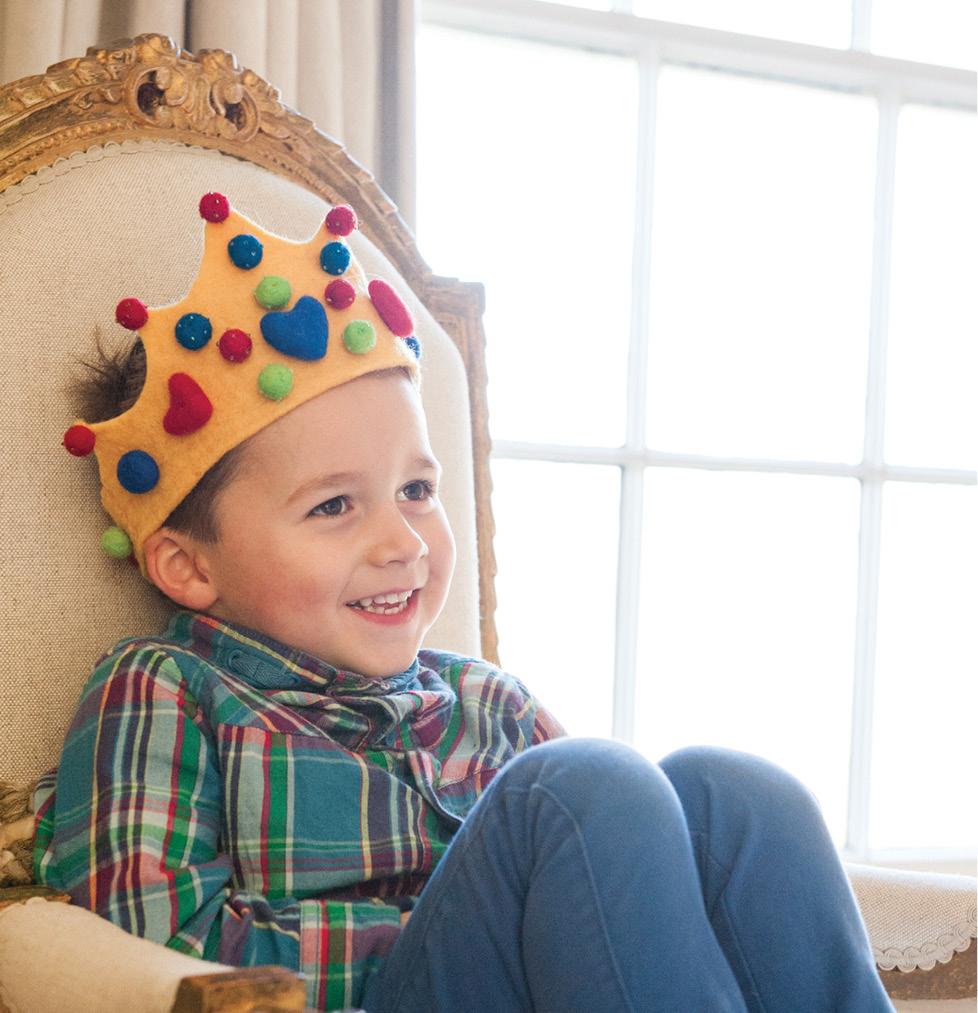
Dressing up is great fun whether youre four or forty-four. This is a simple design and children will not only enjoy playing with it but also personalizing it with jewels.
You will need
Two 25cm (10in) squares of felt
Twenty felt balls
Three to six wet-felted hearts or pre-cut felt shapes
Sewing thread
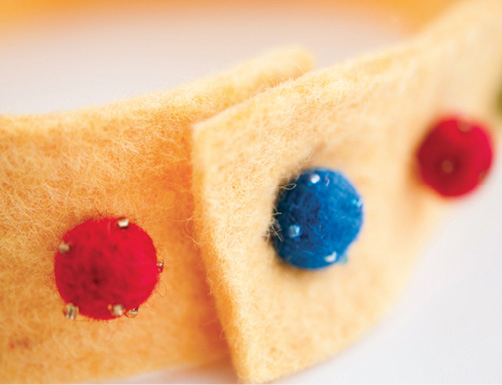
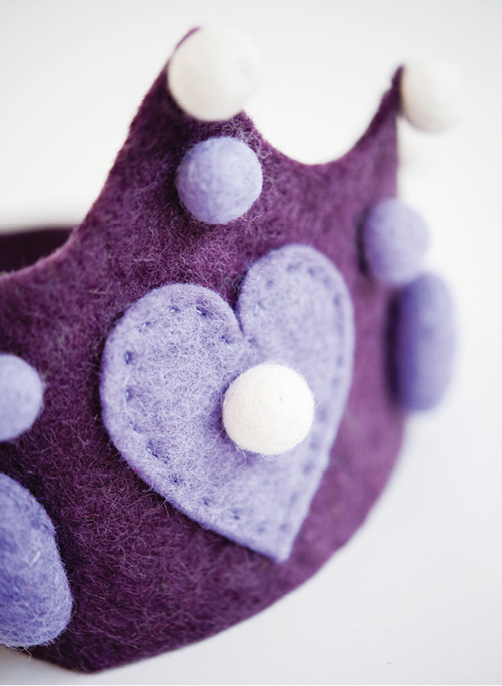
Method
1 Using the templates provided, cut out the three crown pieces. Cross stich or glue the sides to the front panel with the cut edge to the cut edge, not overlapping ().

2 Cut a 2cm (in) slit on one end (as shown on the template) and stitch a felt ball on the other side this will form your fastening.
3 Decorate the front panel with the felt balls and pre-cut felt shapes or the wet-felted hearts. Pin and then stitch them into place. Attach the felt balls to the points, positioning them 0.5cm (in) beneath the actual tip, to give extra support and to stop the tips from flopping over ().

Further Felty Ideas
Make a crown on an American Indian theme by using feathers and wooden beads.
Create a flower fairy crown by using pre-cut felt flowers and leaves.
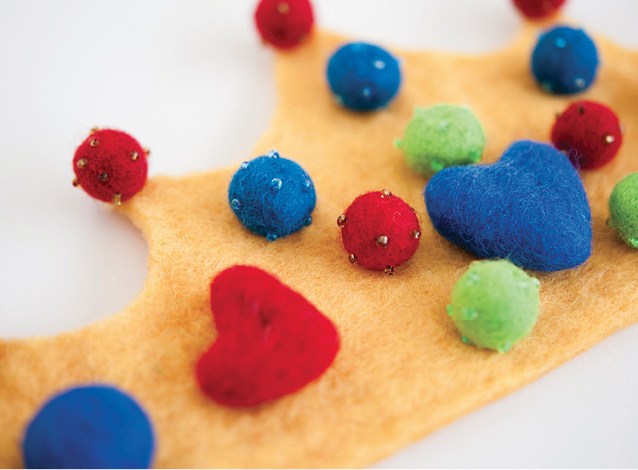
Finger Puppets
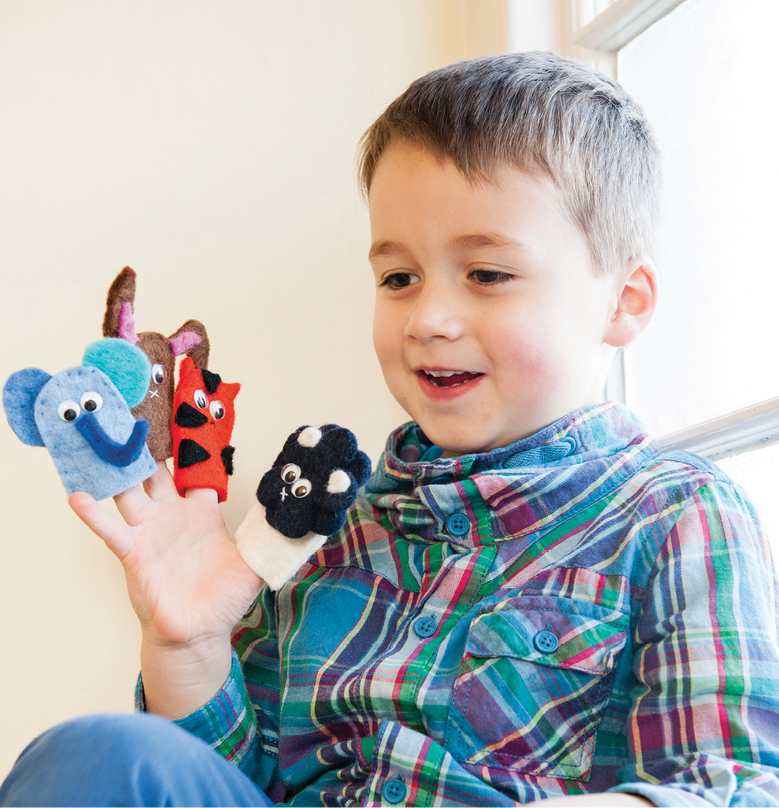
These finger puppets are, quite literally, childs play! As well as the fun of playing with them, children can get involved in making them too. They are a perfect size to take on a boring car journey or bus ride just the ticket to pass the time or entertain others. Eight different designs are shown but you could easily create more.

